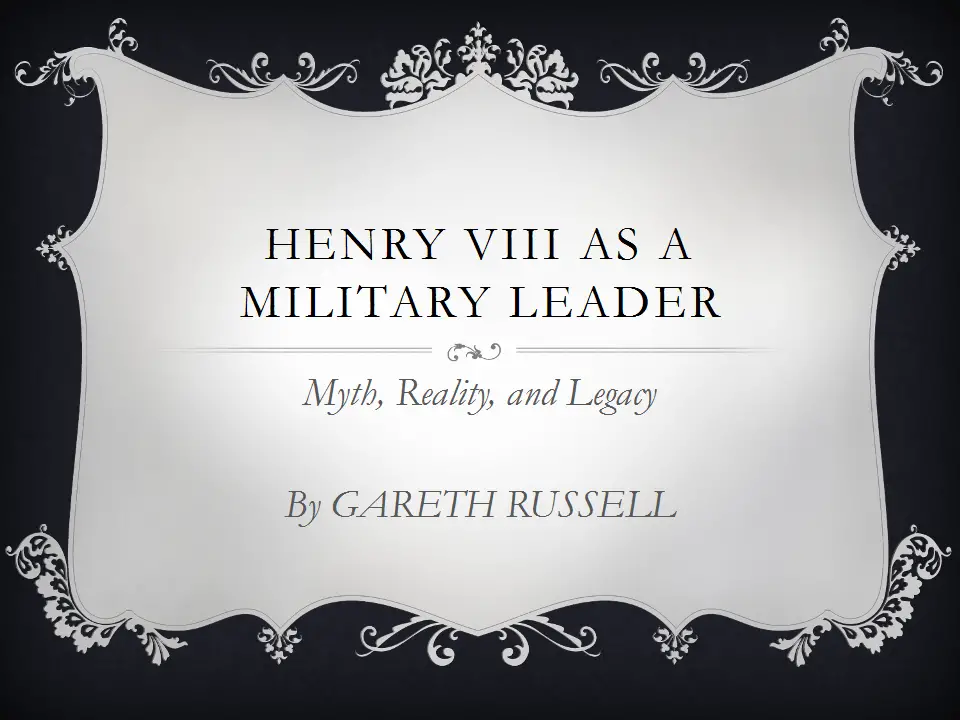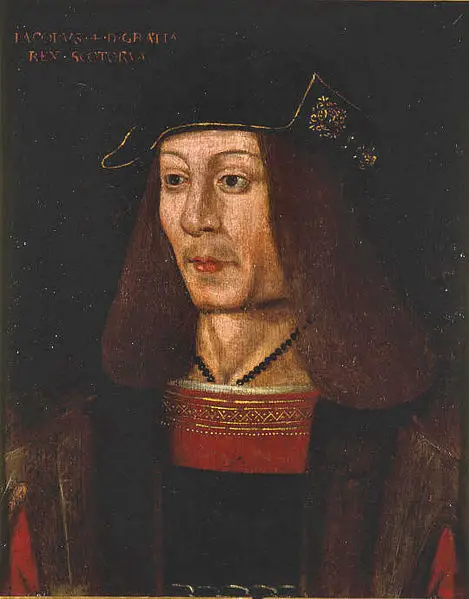 Thank you to Heather R. Darsie, our regular Tudor Society contributor, for today's article. Over to Heather...
Thank you to Heather R. Darsie, our regular Tudor Society contributor, for today's article. Over to Heather...
Happy Thanksgiving to our American members! Today also marks the 474th anniversary of the Battle of Solway Moss, a border skirmish that took place on the English side of the border with Scotland on 24th November 1542. This was the last of a series of such battles that arose from a falling-out between Henry VIII of England and his nephew, James V of Scotland.
Henry VIII had famously broken from the Roman Catholic Church and became head of the Church of England. Henry VIII had desired for his nephew, James V, to do the same. James V refused. Henry VIII had set up a meeting between the two monarchs at York in 1541, but James V had refused to come. Insulted, Henry VIII sent his army to raid and harry Scottish border towns.
Incensed by his uncle’s behaviour, James V retaliated by gathering together upwards of 15,000 to 18,000 Scottish troops to sack or otherwise abuse the English border towns in the English north-west. James V assigned this undertaking to Robert, Lord Maxwell, James V’s Warden of West March. A much smaller force of 3,000 Englishmen, led by Sir Thomas Wharton, rose to fight off the Scottish. Sir William Musgrave also served as commander. The Scottish troops under James V faced off against the troops put up by Henry’s local commander on 24 November 1542. Astonishingly, the English won the day, with not a little help from the local landscape.
The battle itself took place around the River Esk and the River Lyne, on the English side of the border, in Solway Moss, Cumberland, England. The English force crested a hill, now known as Oakshawhill, at which point the Scots saw them and feared the English were backed by a much larger force. The Scottish were not properly disciplined and so hesitated, leading to their demise. Lord Maxwell had not been formally appointed the commander of the Scottish army, leaving room for James V’s favourite, Oliver Sinclair, to declare that he was commander. This caused dissension amongst the Scottish troops and caused the army’s structure to come undone. The cavalry of the English army swiftly descended on the Scots, causing most of the Scottish troops to flee or otherwise surrender. The Scots were bound in by a portion of the River Esk and the Moss, and had nowhere to flee. Fighting ensued, resulting in a great loss to the Scottish army. Sadly, many Scotsmen drowned in the River Esk that day. The Scots finally surrendered, handing over their ten or so field guns to the English.
It is estimated that the Scots lost approximately 1,200 men, or roughly 7 to 8 percent of their army, whereas the English lost only seven members of their army, or less than 1 percent. The defeat at Solway Moss was devastating to James V, who died, possibly in part of a broken heart, a couple of weeks later on 14 December 1542. James had been staying in the safety of Lochmaben, but after the defeat, retired to Falkland Palace. He was delirious with fever and is said to have lamented the death of his favourite, Sinclair, and defeat at Solway Moss more than anything. His death left his six-day-old daughter, Mary, as Queen of Scots. James V was only 30 years old when he died.
Heather R. Darsie lives in the United States with her family and three parrots. She works in the legal field, with a focus on children. She obtained a Bachelor of Arts degree in German Languages and Literature, then a Juris Doctorate in American jurisprudence, and studied abroad in Costa Rica and France. Heather has always loved history. She first became acquainted with Elizabeth I when she was in middle school and chose to write a book report about her. Since then, she has always held an interest in the Renaissance and its numerous enigmatic citizens, with particular focus on the history of England and Italy. She is currently working on a book on the heraldry of Tudor women and is also researching Anne of Cleves.
Sources & Suggested Reading
- Phillips, Gervase, The Anglo-Scots Wars, 1513-1550: A Military History, Boydell Press (1999).
- Castelow, Ellen. The Battle of Solway Moss. http://www.historic-uk.com/HistoryMagazine/DestinationsUK/The-Battle-of-Solway-Moss/ Retrieved 10 November 2016.
- UK Battlefields Resource Centre. Battle of Solway Moss, 24th November 1542. http://www.battlefieldstrust.com/resource-centre/medieval/battleview.asp?BattleFieldId=40 Retrieved 19 November 2016.
- Border Reivers. The Battle of Solway Moss. https://www.borderreiverstories-neblessclem.blogspot.com/2013/10/the-battle-of-solway-moss-was-fought.html?m=1 Retrieved 19 November 2016.
- Battlefields of Britain. Battle of Solway Moss (1542). https://www.battlefieldsofbritain.co.uk/battle_solway_moss_1542.html Retrieved 19 November 2016.



I feel that many of the Scottish army felt that Oliver Sinclair was not the man who could lead them to victory. Lord Huntley had won a minor battle against the English at Haddon Rig not long before Solway and I think that perhaps many of the soldiers, felt that perhaps Lord Huntley was the better man to lead the army. Whatever he did last time worked as the English were sent home with a flea in the ear, so perhaps under his leadership they could do the same again.
It was Cardinal Beaton who persuaded James to flee the battlefield and hole up at Falkirk, so in a way James left his men to die in the mud.
I’m not saying the outcome would have been any different if James had stayed with his men, but at least he would have gone down fighting.
I think his death was down to pure apathy and shame, as he had let his men down just when they needed him most. I also feel that many of his men viewed him ever afterwards as a coward.
Oliver Sinclair was captured by the English by the way, and Cardinal Beaton got his comeuppance, when he was hung naked from the window of his bed chamber in St Andrews for all to see. That was a sort of 6 of 1 and half a dozen of the other, death. It was partly in revenge for making James leave his men at Solway and partly down to his interference in the Queen’s marriage plans into England.
It came with a lass and it will end with a lass. Alass. Thus legend has James v say on the defeat as he dies of shock, leaving a six years old infant female queen, citing an old prophecy that the House of Stewart will end with a female, just as it began with a female. Mary of course was not the last, as James, her son became King of Scotland and England and Wales. In one sense, though it was true as the name changed to the variation of Stuart. James must have despaired to leave such a vulnerable young infant as his heir.
6 day old.
In a way the prophesy did come true, as the crown and kingdom of Scotland, did merge into the crown and kingdom of England. The direct line of Scottish monarchs died out with Queen Anne in 1714.
The variation to the Stuart name came from Mary herself. Possibly she felt the word “Stewart” wasn’t regal enough.
And of course her marriage to Henry Stuart, Lord Darnley, her cousin. The Hanover line of course comes from the descendants of Princess Elisabeth, sister of Charles I and the Prince Paletine. The nearest Protestant male relative being the son of her youngest daughter, Sophia, George the First. Although Queen Anne had 14 children, all tragically died. However, technically the direct Stuart line did not die out, but was excluded by the Exclusion Bill of William and Mary, who had James ii children by Marie of Madonna, his Catholic second wife banned from the throne, later confirmed by the Act of Settlement. James vii, commonly known as the King over the Water or Old Pretender, and his heir, Charles Edward Stuart, were the legitimate son and grandson of James ii, but excluded on religious grounds. Had they not been so excluded, the royal Stuart line would have been directly carried on, maybe to the present day.
It must have been frightening for young Mary, raised in a tense atmosphere of fear, upheaval, rival death, battles, batty Uncle Henry wanting to kidnap her, escaping to France, where she was raised in luxurious grandeur. As you say, another reason for the variation, probably too shabby for Mary. Interesting information on Oliver Sinclair, thanks.
Young Mary spent a couple of years hidden away in Dunkeld during the years of the rough wooing. After H8 death it was hoped that perhaps things may have been a little better for Young Mary, but Pinkie Cleugh showed that young Mary was still in great danger, and Marie de Guise sent young Mary to Inchmaholme for a few weeks and used the Auld Alliance between Scotland and France to help with troops to give England a bloody nose, and also with trouble within Scotland as many of her nobles by this tie were in open rebellion with her.
Sending young Mary to France, guarenteed her safety, but I feel that many of Mary’s problems were because of her life in France. If she had stayed in Scotland she would have learnt how to deal with her nobles whether the outcome would have been any different is open to speculation, but I somehow think she would have perhaps met the same sorry end, but by the hand of one her own nobles, just as so many of her ancestors had before her. As it goes it’s rumoured that an assassination attempt was made on her on her wedding day to Francois.
James 2nd wife was Mary of Modena.
Yes, I do know all Mary of Modena, typo sorry, late night sleepy eyes, thanks for spotting. I completely agree, it is possible, but with all of the dangers, Marie de Guise could hardly take that chance. The powerful Guise factions and policies of Catherine de Medici and their struggle with the supporters of Navarre probably did not make France a great place, but of course the young Princess Mary was protected and molly coddled from all that. King James as a lad in Scotland escaped a few close calls, attempts at assassination, changes of regent, by murder or otherwise, so he certainly learned to trust nobody, save his tutor, who although strict was respected by James. It’s little wonder James was his own man but cautious. It was probably lucky that he was not present when his father was murdered, removed and kept safe. Like his mother James was a scholar, unlike his mother his intelligence, as in common sense, not academic achievements, overcame his heart. Having said that he did gallently sail to Denmark to bring his bride, Anne back after an aborted storm, only to encounter one on the way home. He also enjoyed the company of those whose science was on the edge, more investigation into witchcraft than was healthy and attributed his ship almost sinking to the same. The infamous Berwick witch trials followed and we all know the personal interest James had in the subject, from a scholar point of view and a personal belief. He was involved in the questioning and later in his reign he also expressed doubts in a number of cases. It’s actually a wonder any of their royal descendants were sain, let alone the few who have suffered from mental illness. I know George iii was not mad, but some other relatives have had mental illness.